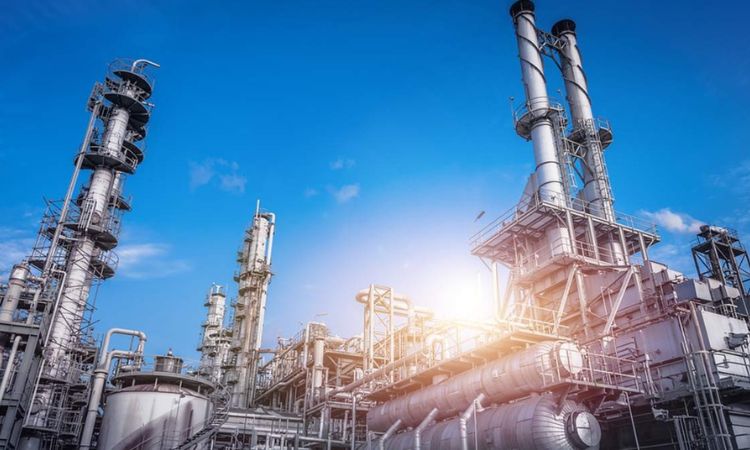- FREE Express Shipping On Orders $99+

Scrubber System Market Share, Size, Trends, Growth, Analysis, Forecast: 2024-2032
The global scrubber system market size is expected to grow at a CAGR of 10.70% between 2024 and 2032, driven by the growing expansion of the major end-use industries. Scrubber systems are essential in controlling air pollution by removing particulates and gases from industrial exhaust streams. As industries worldwide aim to comply with stringent environmental regulations, the demand for effective air pollution control technologies like scrubber systems is on the rise. This blog post delves into the market share, size, trends, growth factors, and forecasts for the global scrubber system market.
Market Segmentation
By Type
Wet Scrubber Systems:
Wet scrubber systems use a liquid to wash unwanted pollutants from a gas stream. These systems are highly effective in removing both particulates and gaseous pollutants. They are widely used in industries where high levels of moisture can be tolerated, such as the chemical and petrochemical sectors.
Dry Scrubber Systems:
Dry scrubber systems, on the other hand, use a dry reagent or slurry to react with and neutralize pollutants. These systems are preferred in applications where liquid waste handling is a concern, such as in the pharmaceutical and mining industries.
By End Use
Marine Industry:
The marine industry is a significant end-user of scrubber systems, particularly in reducing sulfur emissions from ships. With the International Maritime Organization (IMO) regulations mandating lower sulfur emissions, the adoption of scrubber systems in this industry is set to increase.
Oil and Gas Industry:
In the oil and gas industry, scrubber systems play a crucial role in controlling emissions from refining and production processes. The demand for cleaner energy solutions is pushing the industry towards adopting advanced emission control technologies.
Petrochemicals and Chemicals Industry:
The petrochemical and chemical industries require efficient pollution control mechanisms to manage hazardous emissions. Scrubber systems are integral in these industries to ensure compliance with environmental standards.
Pharmaceuticals Industry:
Pharmaceutical manufacturing processes generate various gaseous emissions that need to be controlled. Scrubber systems are used to capture and neutralize these emissions, ensuring a safer and cleaner production environment.
Mining and Metallurgy Industry:
The mining and metallurgy industry generates significant amounts of dust and gaseous pollutants. Scrubber systems help in mitigating these emissions, contributing to safer mining operations and reduced environmental impact.
Glass Industry:
In the glass industry, scrubber systems are used to control emissions from furnaces and other high-temperature processes. These systems are crucial in maintaining air quality and complying with environmental regulations.
Other Industries:
Other industries, including food and beverage, pulp and paper, and power generation, also utilize scrubber systems for emission control, contributing to the overall market growth.
Regional Analysis
North America:
North America is a leading market for scrubber systems, driven by stringent environmental regulations and the presence of major end-use industries. The region’s focus on sustainable industrial practices is boosting the demand for advanced scrubber systems.
Europe:
Europe’s commitment to reducing industrial emissions and promoting clean technologies is propelling the growth of the scrubber system market. The region’s strong regulatory framework and emphasis on environmental protection are key growth drivers.
Asia-Pacific:
The Asia-Pacific region is witnessing rapid industrialization and urbanization, leading to increased demand for scrubber systems. Countries like China and India are investing heavily in emission control technologies to combat air pollution.
Latin America:
Latin America’s market growth is fueled by the expansion of the oil and gas and mining industries. The region’s focus on sustainable development and environmental conservation is driving the adoption of scrubber systems.
Middle East and Africa:
The Middle East and Africa are emerging markets for scrubber systems, with growing investments in industrial infrastructure and environmental protection. The oil and gas industry in these regions is a significant end-user of scrubber systems.
Market Dynamics
SWOT Analysis
Strengths:
- High efficiency in removing pollutants
- Compliance with stringent environmental regulations
- Versatility in applications across various industries
Weaknesses:
- High installation and maintenance costs
- Technical complexity and operational challenges
Opportunities:
- Increasing investments in industrial pollution control
- Technological advancements in scrubber systems
- Expanding applications in emerging industries
Threats:
- Stringent regulations and compliance requirements
- Competition from alternative emission control technologies
- Economic uncertainties affecting industrial investments
Competitive Landscape
The scrubber system market is highly competitive, with key players focusing on innovation and strategic collaborations. Major companies like Alfa Laval, Wärtsilä, DuPont, Babcock & Wilcox Enterprises, and Mitsubishi Hitachi Power Systems dominate the market. These companies are continuously investing in R&D to develop advanced scrubber systems and expand their market presence.
Market Trends
Emerging trends in the scrubber system market include the adoption of hybrid scrubber systems that combine wet and dry technologies for enhanced efficiency. The integration of IoT and automation in scrubber systems is also gaining traction, enabling real-time monitoring and control of emissions.
Growth Drivers
The primary growth drivers for the scrubber system market include increasing environmental awareness, stringent emission regulations, and the rising need for air pollution control in industrial processes. The growing adoption of scrubber systems in the marine industry, driven by IMO regulations, is also a significant growth factor.
Market Challenges
Despite the positive growth outlook, the scrubber system market faces challenges such as high initial costs, technical complexities, and the need for regular maintenance. Regulatory and compliance issues can also pose challenges for market players.
Forecast Analysis (2024-2032)
The global scrubber system market is projected to witness substantial growth, driven by increasing demand for emission control technologies and advancements in scrubber system designs. The market is expected to present lucrative opportunities for investors and stakeholders in the coming years.
